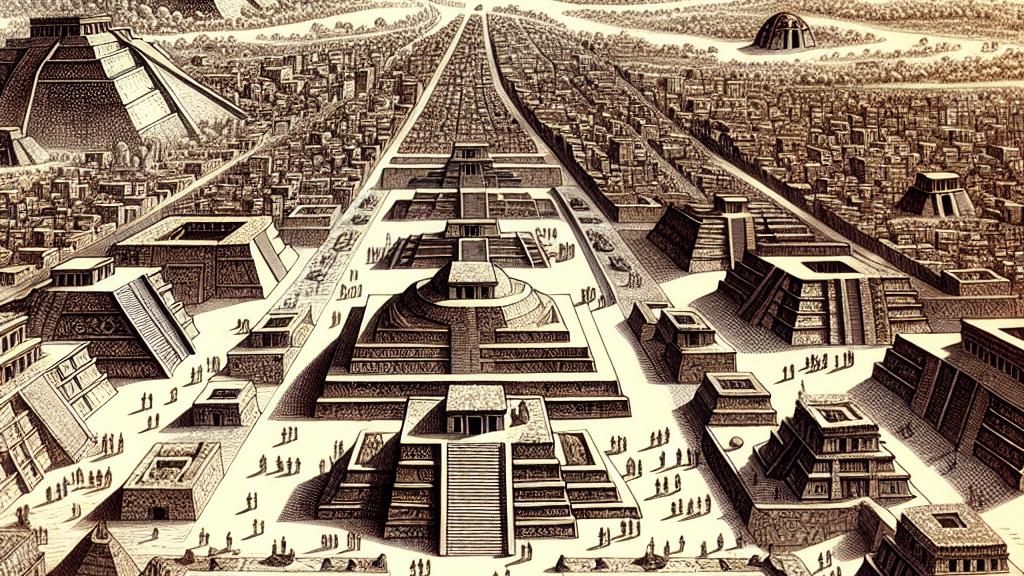Discovering the Secrets of Teotihuacán's Animals and People
Overview
- Teotihuacán is a colossal ancient city in Mexico, steeped in rich history and cultural significance.
- Recent archaeological discoveries bring to light the vital role animals played in elaborate rituals.
- These findings drastically reshape our understanding of the intricate relationships between humans and animals in Mesoamerican societies.

Teotihuacán: A Marvel of Ancient Engineering
Teotihuacán, often dubbed the 'City of the Gods,' is a magnificent ancient metropolis situated just 30 miles northeast of Mexico City. This thriving urban center flourished between 100 B.C. and 650 A.D., marking its zenith as one of the largest cities in the ancient world, with a population estimated to reach as high as 200,000. Imagine bustling streets, majestic pyramids towering above, and a sophisticated grid layout filled with intricate murals that tell stories of a civilization at its peak. The iconic Pyramid of the Sun and the Pyramid of the Moon, significant landmarks of this era, not only showcased advanced architectural skills but also served as focal points for religious and social ceremonies, hinting at a dynamic society deeply connected to both the heavens and the earth.
Unearthing Secrets Beneath the Moon Pyramid
In recent excavations, archaeologists unearthed remarkable evidence locked away within the chambers of the Moon Pyramid. A stunning discovery of nearly 200 animal remains, alongside twelve human skeletons in burial 6, sheds new light on the sacrificial practices of this vibrant society. This isn't just about death; it’s a glimpse into the spiritual and cultural life of the Teotihuacanos, where animal sacrifice was possibly viewed as a powerful means of communication with the divine. Envision the grand ceremonies conducted before hundreds, where these creatures were honored, illustrating a complex web of beliefs that bound the community together.
Animals: Revered Participants in Sacred Ceremonies
The significance of animals in Teotihuacán transcended mere utility; they were revered allies in spiritual rituals. Renowned anthropologist Nawa Sugiyama highlights that apex predators like golden eagles and Mexican gray wolves played pivotal roles, serving as potent symbols bridging the earthly and spiritual realms. For instance, the discovery of 18 golden eagle remains corresponding to the 18 months of the Teotihuacán calendar suggests these majestic birds were central to ceremonial processions, captivating audiences with their beauty and grace. Such captivating imagery not only enriches our understanding of ancient rituals but also invites us to appreciate the deep reverence these people held for the natural world.
Maize: The Lifeblood of Mesoamerican Existence
Maize, often referred to as corn, was not just a staple food; it represented the very essence of life for the people of Mesoamerica. The analysis of dietary remains from the animals emphasizes this connection, as maize was a common component of their diets. Envision vast fields of corn swaying in the breeze, symbolizing fertility and the cycle of life, as ancient peoples believed that humans, too, originated from this sacred crop. This connection to maize was not merely nutritional; it was spiritual, making it a cornerstone of cultural identity that permeated all aspects of their lives, from sustenance to ceremonies.
Teotihuacán's Enduring Legacy: A New Perspective
As we delve deeper into the relationship between humans and animals in Teotihuacán, we begin to unravel a narrative that transcends time. Rather than interpreting sacrificial practices as mere brutality, we start to recognize them as deeply meaningful rituals imbued with cultural significance. These acts were not just about death; they fostered a connection that celebrated life and the shared existence between species. Thus, Teotihuacán emerges not only as a site of monumental architecture but also as a vibrant hub of life, where every being played a vital role in the grand tapestry of existence. This lasting legacy resonates through the ages, inviting us to reflect on the profound connections that bind life together.

Loading...